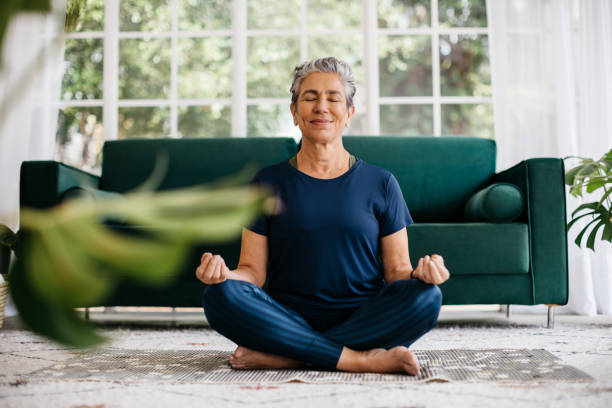In a world where societal standards of beauty and physical appearance often dominate our self-worth, cultivating body acceptance and improving self-image has become an essential aspect of mental and emotional well-being. One of the most effective approaches to achieving these goals is through mindfulness. Mindfulness techniques can help individuals develop a healthier, more compassionate relationship with their bodies, leading to greater self-acceptance and an overall improvement in self-esteem. This article explores various mindfulness techniques and practices that can enhance body acceptance and improve overall self-image.
Understanding Mindfulness and its Benefits for Self-Image
Before diving into the specific techniques, it’s essential to understand what mindfulness is and how it can positively impact body acceptance and self-image.
Mindfulness is the practice of paying attention to the present moment without judgment. It involves being aware of your thoughts, feelings, bodily sensations, and the environment around you in a non-reactive and accepting way. This practice encourages individuals to observe their experiences with curiosity and openness, rather than reacting with criticism or judgment.
When applied to body image and self-acceptance, mindfulness can help break the cycle of negative self-talk, self-criticism, and comparison to others. By focusing on the present moment and developing an attitude of non-judgmental awareness, mindfulness can lead to greater self-compassion, acceptance, and an improved relationship with one’s body. Instead of focusing on imperfections or external standards, mindfulness invites individuals to reconnect with their bodies in a kind and accepting way.

The Psychological Link Between Mindfulness and Body Acceptance
Research has shown that mindfulness can improve body image by reducing stress, anxiety, and negative thoughts related to appearance. Studies also indicate that mindfulness can help reduce the impact of social media and cultural pressures on body image, leading to improved self-esteem. A key factor in this is self-compassion, a concept central to mindfulness that involves treating yourself with kindness and understanding rather than harsh self-judgment.
Mindfulness has also been found to improve emotional regulation. By being present and aware of emotions as they arise, individuals can create space between an initial emotional reaction and their response. This is particularly helpful when it comes to managing the negative emotions associated with body image struggles, such as shame, guilt, and frustration.
Practical Mindfulness Techniques for Enhancing Body Acceptance
There are several mindfulness practices that can be integrated into daily life to promote body acceptance and improve self-image. Below are some of the most effective techniques:
1. Body Scan Meditation
The Body Scan Meditation is a foundational mindfulness technique that involves systematically focusing attention on different parts of the body. This practice encourages individuals to connect with their bodies in a way that fosters awareness, acceptance, and compassion.
How to Practice Body Scan Meditation:
- Find a comfortable, quiet place where you can sit or lie down undisturbed.
- Close your eyes and take several deep breaths to center yourself.
- Start by bringing awareness to your feet, noticing any sensations, tension, or discomfort. Gradually move up your body, from your feet to your head, paying attention to each body part.
- As you focus on each body part, observe any sensations without judgment. If you feel discomfort or tension, simply acknowledge it without trying to change it.
- If your mind wanders, gently bring your focus back to your body.
- Practice this for about 10 to 20 minutes, allowing yourself to feel connected to your body.
The Body Scan encourages individuals to listen to their bodies with kindness and curiosity rather than criticism. Over time, it can help reduce negative thoughts about specific body parts and foster a greater sense of body acceptance.
2. Mindful Movement Practices
Incorporating mindful movement into your routine is another powerful way to enhance body acceptance. Mindful movement involves paying full attention to the body as it moves, rather than focusing on how the body looks or performing the movement perfectly. Practices like yoga, tai chi, or even mindful walking are ideal for cultivating a deeper connection with your body.
How to Practice Mindful Movement:
- Choose a form of movement that resonates with you, such as yoga or walking.
- As you engage in the movement, pay close attention to how your body feels. Focus on the sensation of your muscles stretching, your breath moving in and out, and the rhythm of your movements.
- Avoid rushing through the movements or comparing your performance to others. Instead, allow each motion to be slow, deliberate, and intentional.
- If your mind starts to judge your body or your performance, gently redirect your focus to the sensations of the movement.
Mindful movement helps individuals break free from the pressure of achieving physical perfection and instead fosters an appreciation for what the body can do. This practice can also improve flexibility, balance, and overall body awareness.
3. Loving-Kindness Meditation

Loving-Kindness Meditation (also known as Metta Meditation) is a mindfulness practice that involves generating feelings of love, compassion, and goodwill toward yourself and others. This practice can be especially powerful for enhancing body acceptance and self-compassion.
How to Practice Loving-Kindness Meditation:
- Sit comfortably in a quiet space and close your eyes.
- Begin by silently repeating phrases that express kindness and well-wishes for yourself, such as “May I be happy, may I be healthy, may I be at peace.”
- As you continue, expand the loving-kindness to others. First, wish happiness for loved ones, then for neutral people, and eventually for those you may have difficulty with.
- Throughout the practice, focus on cultivating a sense of warmth and compassion within yourself.
Loving-Kindness Meditation can help individuals shift from self-criticism to self-compassion. It teaches that you deserve love and kindness, which can significantly enhance your self-image. By sending love to all parts of your body, you begin to accept your body as it is, fostering a more positive self-image.
4. Mindful Eating
Mindful eating is a practice that encourages individuals to slow down and pay full attention to the eating experience. It involves being aware of the sensory aspects of food, such as taste, texture, and smell, as well as listening to your body’s hunger and fullness cues.
How to Practice Mindful Eating:
- Before you begin eating, take a moment to appreciate the food in front of you. Notice its colors, textures, and aromas.
- As you take each bite, chew slowly and pay attention to the flavors and sensations in your mouth.
- Throughout the meal, stay present with the act of eating. Avoid distractions like TV, phones, or reading.
- Tune into your body’s signals of hunger and fullness, and stop eating when you feel satisfied rather than overly full.
By practicing mindful eating, individuals can develop a healthier relationship with food and their bodies. This technique promotes body awareness, reduces emotional eating, and encourages acceptance of the body’s natural cues for nourishment.
5. Body Appreciation Practice
A daily Body Appreciation Practice can significantly improve body image by shifting the focus from criticism to gratitude. This technique involves intentionally acknowledging and appreciating the unique qualities of your body.
How to Practice Body Appreciation:
- Stand in front of a mirror, take a few deep breaths, and pause to notice your body.
- Instead of focusing on areas you don’t like, find aspects of your body to appreciate. For example, you might appreciate the strength of your legs, the flexibility of your arms, or the way your body carries you through the world.
- Speak kindly to yourself, acknowledging your body’s accomplishments and capabilities.
- Set a daily intention to notice one thing about your body that you’re grateful for.
This practice helps shift the mindset from focusing on perceived flaws to celebrating the functionality and beauty of your body. Over time, it can significantly improve your self-image by fostering a sense of appreciation and respect for your body.
6. Acceptance and Commitment Therapy (ACT) Techniques
Acceptance and Commitment Therapy (ACT) is a form of psychotherapy that encourages individuals to accept their thoughts and feelings without judgment, while also committing to actions aligned with their values. ACT techniques, such as cognitive defusion and values clarification, can be highly beneficial in improving body image.
How to Practice ACT Techniques for Body Acceptance:
- Cognitive Defusion: When negative thoughts about your body arise, practice distancing yourself from these thoughts. Instead of saying “I am unattractive,” say “I am having the thought that I am unattractive.” This helps create space between you and the negative thought.
- Values Clarification: Reflect on your core values and what truly matters to you. Instead of basing your worth on appearance, focus on qualities like kindness, intelligence, creativity, or compassion. Align your actions with these values, which can help shift the focus away from superficial concerns.
ACT encourages individuals to accept their current state without judgment, which can be liberating for those struggling with body dissatisfaction. It emphasizes living in accordance with one’s values, rather than being controlled by fleeting appearance-based standards.
Overcoming Challenges in Mindfulness Practices
While mindfulness techniques can be transformative, it is important to acknowledge that cultivating body acceptance and improving self-image is a gradual process. Some challenges that individuals may face include:
- Negative Self-Talk: It’s common for individuals to struggle with ingrained patterns of negative thinking about their bodies. Overcoming this requires patience and persistence in practicing mindfulness and reframing these thoughts.
- Cultural and Social Pressures: The media and societal beauty standards can make it difficult to accept one’s body. Mindfulness practices help reduce the impact of these external pressures by fostering an internal sense of acceptance and self-compassion.
- Emotional Resistance: Some people may resist mindfulness practices because they feel disconnected from their bodies or find it difficult to sit with uncomfortable emotions. It can be helpful to start with short sessions and gradually build up the practice.
By understanding and addressing these challenges, individuals can continue to progress on their journey to body acceptance and improved self-image.
Conclusion
Mindfulness techniques offer powerful tools for enhancing body acceptance and improving overall self-image. By cultivating awareness, self-compassion, and presence, individuals can develop a healthier relationship with their bodies and overcome the negative impacts of societal pressures and internal criticism. Practices such as Body Scan Meditation, mindful movement, Loving-Kindness Meditation, mindful eating, and body appreciation help shift the focus from external appearance to inner acceptance and gratitude. With regular practice, mindfulness can lead to a transformative shift in how we perceive ourselves, fostering greater well-being and emotional resilience.



